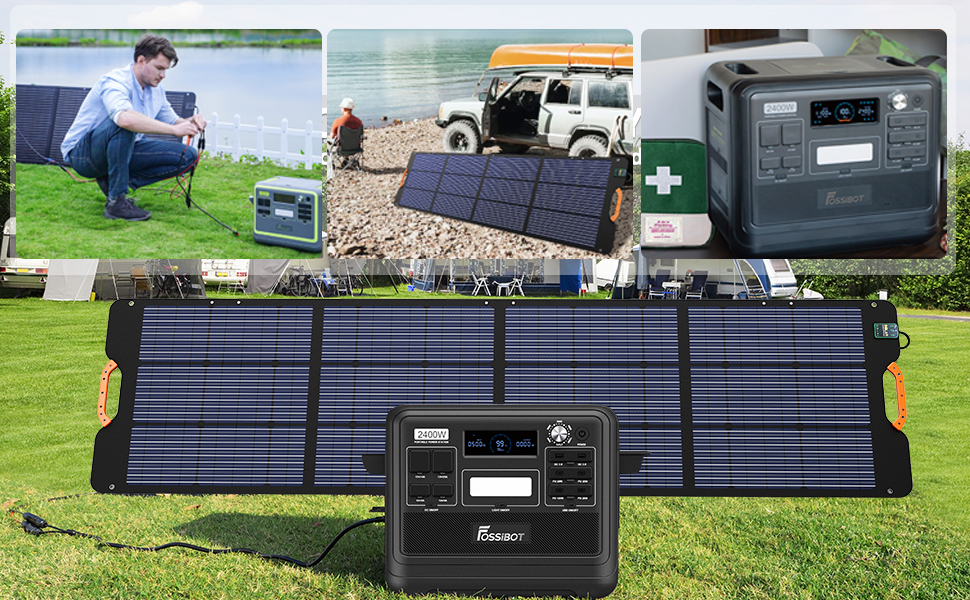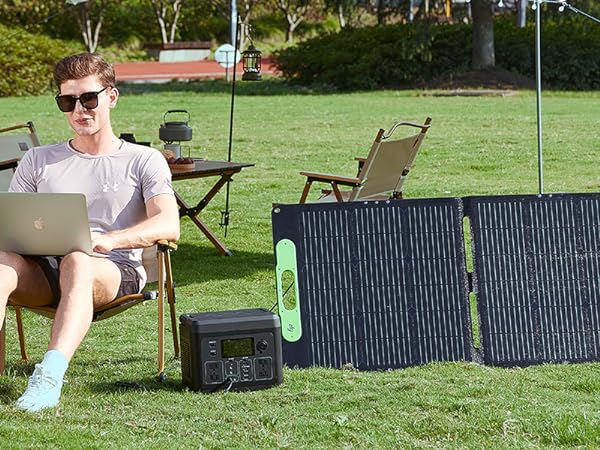Beginner's Guide - Everything You Need to Know About Portable Solar Panels
Do you still remember those days when your phone ran out of battery just when you needed it the most? Or those moments when you were camping, and your gadgets suddenly became useless because there were no power outlets for miles? Portable solar panels are changing the game entirely. These small but incredibly powerful devices are now more accessible and efficient than ever.
Did you know that the global portable solar panel market is projected to reach $1.5 billion by 2030, according to a report by Allied Market Research? This shows that more and more people are discovering the benefits of this technology. And no, it’s not just about saving on electricity bills, but also about the freedom of having energy wherever you are.
So, why should you care about portable solar panels? The answer is simple: because they offer energy independence, a sustainable alternative to conventional energy sources, and, most importantly, the opportunity to make the most of every adventure. Get ready to discover a technology that can transform the way you think about energy—not just as a service but as a personal resource, always at your disposal.
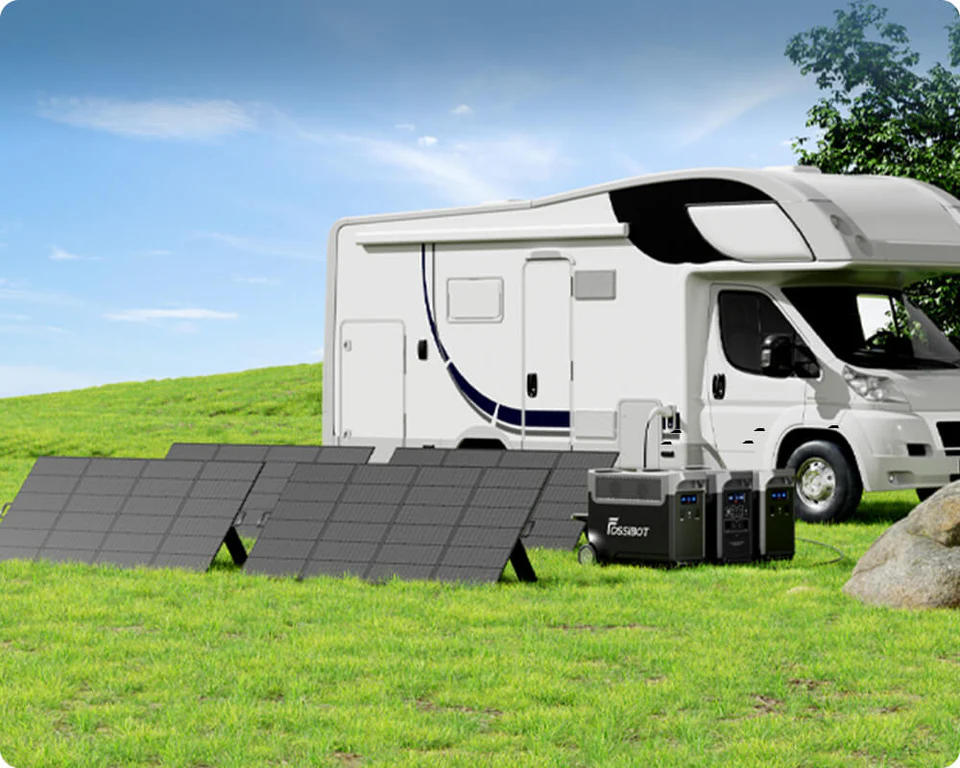
How a Portable Solar Panel Works
At first glance, a portable solar panel looks like a simple rectangle with a layer of glass and a thin frame, but the technology behind it is much more complex. It all starts with solar cells—those small components that capture sunlight and convert it into electricity.
Portable solar panels use photovoltaic (PV) cells made from silicon, a material capable of generating electric current when exposed to light. The process is straightforward: sunlight hits the solar cells, and the photons' energy from the light is absorbed, creating a flow of electrons. This flow represents electric current, which the device immediately begins storing in a battery or transferring directly to connected gadgets.
A portable solar panel consists of several layers: a protective layer made of glass or hard plastic, the solar cells themselves, and a substrate providing mechanical support. Additionally, it includes a voltage regulator that ensures your devices receive a consistent and safe energy flow, regardless of sunlight intensity.
Some models also come with USB ports, AC or DC outlets, enabling you to connect phones, laptops, cameras, or even mini-fridges directly. In other words, portable solar panels not only generate energy but also make it highly accessible for your daily needs.
Whether you use them for hiking, powering devices at home, or being prepared for emergencies, these panels are designed to be efficient and user-friendly, even for beginners.
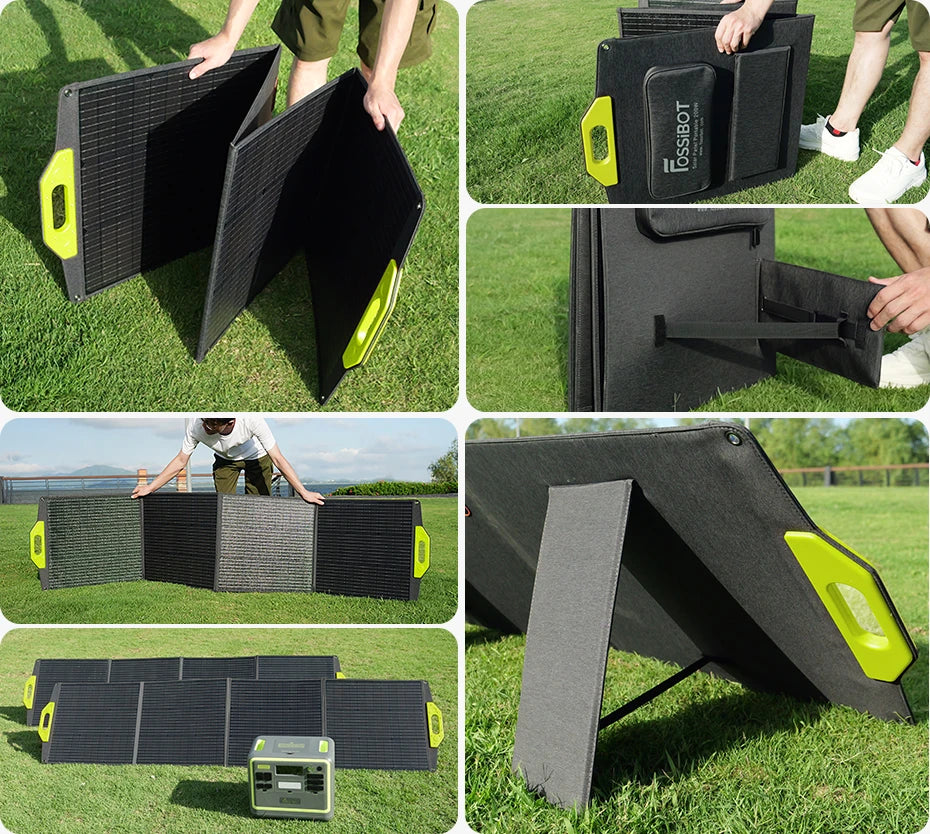
Benefits of Using Portable Solar Panels
Portable solar panels are a practical tool with numerous advantages. The first and most obvious benefit is energy independence. With a portable solar panel, you are no longer tied to the electrical grid. This means you can explore remote places, attend outdoor events, or work remotely in nature without worrying about drained batteries.
Another major benefit is the contribution to environmental protection. Solar energy is 100% clean and renewable, meaning using a solar panel significantly reduces your carbon footprint. Durability is yet another reason to invest in such a device. Most portable solar panels are built to withstand harsh outdoor conditions. Whether you’re camping or using them for home projects, these panels are designed to be resilient and long-lasting.
Lastly, let’s not forget the convenience they bring. Portable solar panels are easy to transport and install. They often come with stands or foldable systems that take up very little space, and their lightweight design makes them ideal for trips or daily use.

Disadvantages and Limitations
While portable solar panels are highly useful, they are not without limitations. One of the biggest drawbacks is their dependence on sunlight. Without adequate sunlight, their efficiency drops dramatically. This means that on cloudy days or at night, you’ll need an additional battery to store the energy generated during the day.
Another issue is their limited energy generation capacity. Even the most advanced portable panels cannot provide as much energy as a fixed solar system, making them more suitable for small devices or temporary use.
The initial cost can also be a deterrent for some. Although prices have dropped in recent years, a high-quality portable solar panel can be a significant investment. However, long-term savings and environmental benefits can offset this aspect. Durability and portability sometimes come with a tradeoff: size. Smaller panels, while easy to carry, have a reduced energy capacity. On the other hand, larger models, which can generate more energy, may be harder to transport and install.
Finally, the performance of a portable solar panel greatly depends on its placement and angle relative to the sun. Without an optimal position, you won’t achieve the best results, which can be frustrating for inexperienced users.
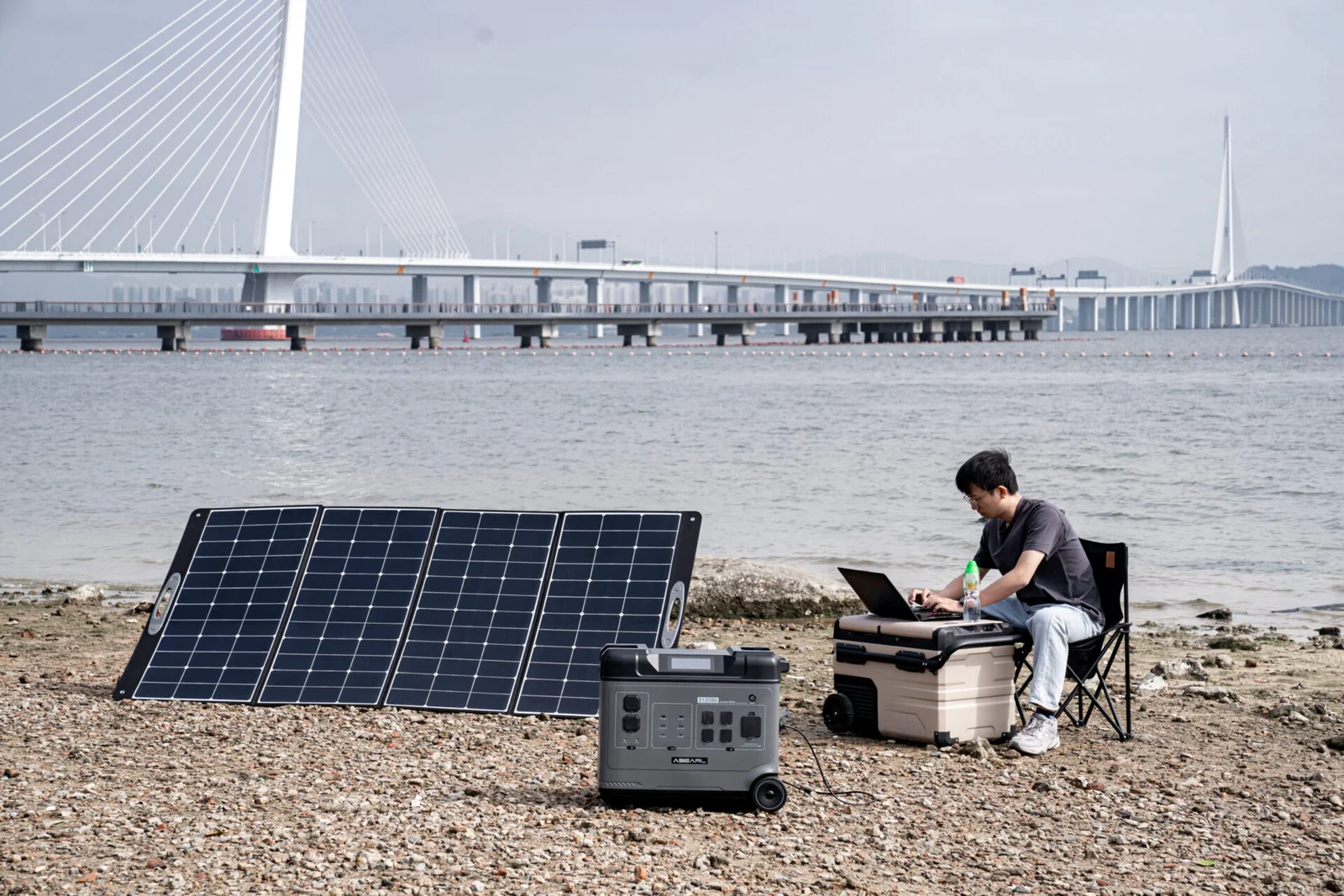
How to Choose a Portable Solar Panel
Choosing a portable solar panel can seem complicated at first glance, but if you consider a few key criteria, you’ll find the right model for your needs. The first thing to consider is the panel's power, expressed in watts (W). If you plan to charge small devices like phones or cameras, a panel with a capacity of 20-50W might suffice. For larger gadgets like laptops or mini-fridges, you’ll need a panel with more than 100W.
Another important aspect is the type of solar cells used. The most common are monocrystalline and polycrystalline. Monocrystalline panels are more efficient and compact but can be more expensive. Polycrystalline panels, on the other hand, are more affordable but may take up more space for the same capacity. Portability is another key factor. If you plan to use the panel on trips or hikes, choose a foldable and lightweight model. The panel’s weight and dimensions can make the difference between a pleasant and frustrating experience.
Compatibility is absolutely necessary. Check if the panel has the right ports for the devices you want to charge. Many modern models offer USB ports, but if you need more complex connections, look for a panel with AC or DC outlets. Lastly, check for durability and weather resistance. If you’ll use the panel outdoors, ensure it’s water- and dust-resistant. Some models even come with protective covers or IP certifications for use in harsh conditions.
Essential Accessories
To maximize the utility of a portable solar panel, the right accessories are absolutely essential. Here are some of the most important accessories to consider when purchasing or using such a device:
-
External Batteries (Power Banks)
These are necessary for storing the energy generated by the solar panel. Choose batteries with a large capacity so you can power multiple devices simultaneously or store enough energy for nighttime use. -
Compatible Cables and Adapters
Ensure you have the correct cables for your devices. Additionally, universal adapters can be useful for connecting to various types of gadgets. -
Charge Regulators
Some portable solar panels don’t have a built-in regulator. This accessory protects devices from overvoltage or current fluctuations, ensuring constant and safe charging. -
Protective Covers
Ideal for shielding the panel from scratches, dust, or harsh weather conditions when not in use. A high-quality cover can significantly extend the device's lifespan. -
Mounts and Clamping Systems
If you plan to use the solar panel outdoors, adjustable mounts can help you position it at the optimal angle for capturing sunlight. -
Extension Cords and Splitters
If you want to connect multiple devices simultaneously, a splitter or an extension cord with multiple ports can be very useful. -
Solar-Powered Fans
These are optional accessories but can be very useful on hot days, especially when camping. They can run directly on the energy produced by the solar panel. -
Energy Monitoring Devices
These gadgets help you track energy consumption and give you a clear understanding of the amount of energy generated and stored.

Solar Panel Maintenance in 7 Steps
To ensure your portable solar panel operates at maximum capacity and lasts as long as possible, proper maintenance is essential. Here are some practical tips to keep your panel in excellent condition:
-
Regular Cleaning
Dust, dirt, and other impurities can significantly reduce the efficiency of the solar panel. Clean its surface with a soft cloth and clean water. Avoid harsh chemicals that could damage the protective layer. -
Periodic Inspections
Check the panel regularly for scratches, cracks, or other damage. Minor defects can be quickly repaired, preventing more significant issues later. -
Weather Protection
Even though many panels are water- and dust-resistant, storing them in a dry place when not in use can significantly extend their lifespan. A protective cover is an excellent investment in this regard. -
Avoid Overheating
Prolonged exposure to high temperatures can affect the panel's performance. Ensure the device has adequate ventilation and isn’t exposed directly to the sun when not in use. -
Proper Storage
If you’re not using the panel for an extended period, pack it according to the manufacturer’s instructions. Store it in a space free from humidity and extreme temperatures. -
Check Connections
Inspect cables and ports for signs of wear or corrosion. Faulty connections can reduce charging efficiency or damage connected devices. -
Update Accessories
If you’re using batteries or other supplementary accessories, ensure they are in good condition. Old or damaged batteries can affect the solar system's overall performance.
Improving Performance
If you want your portable solar panel to operate at peak efficiency, here are some essential tips to follow:
-
Proper Positioning
Place the panel directly facing the sun, considering the best angle for your geographic location and season. In northern regions, for example, a more pronounced southern orientation can significantly boost energy output. -
Keep It Clean
A clean panel captures more light, so regularly remove dust and dirt from its surface. This becomes especially important in dusty or sandy environments where buildup can occur quickly. -
Avoid Shaded Areas
Even a small shaded section can significantly reduce the panel’s efficiency. Choose open areas free of obstacles like trees or buildings that might block sunlight during the day. -
Invest in a High-Quality Battery
Efficient batteries allow optimal storage of produced energy, giving you more autonomy. Opt for models with high capacity and a long lifespan for worry-free use. -
Monitor Performance
Energy monitoring devices help you understand how well the system is functioning. They enable you to quickly identify and address energy losses or issues. -
Ensure Ventilation
Overheating can affect solar cells, so ensure the panel has constant airflow, especially on hot days. -
Optimize Accessories
High-quality cables, adapters, and voltage regulators help reduce energy loss and ensure consistent and safe energy flow. Using compatible components is crucial for performance. -
Seasonal Adjustments
During less sunny months, such as winter, adjust the panel’s tilt or use additional batteries to store energy generated during the day.
By following these tips, you’ll not only improve the panel’s performance but also enjoy more energy for all your daily activities, wherever you may be.
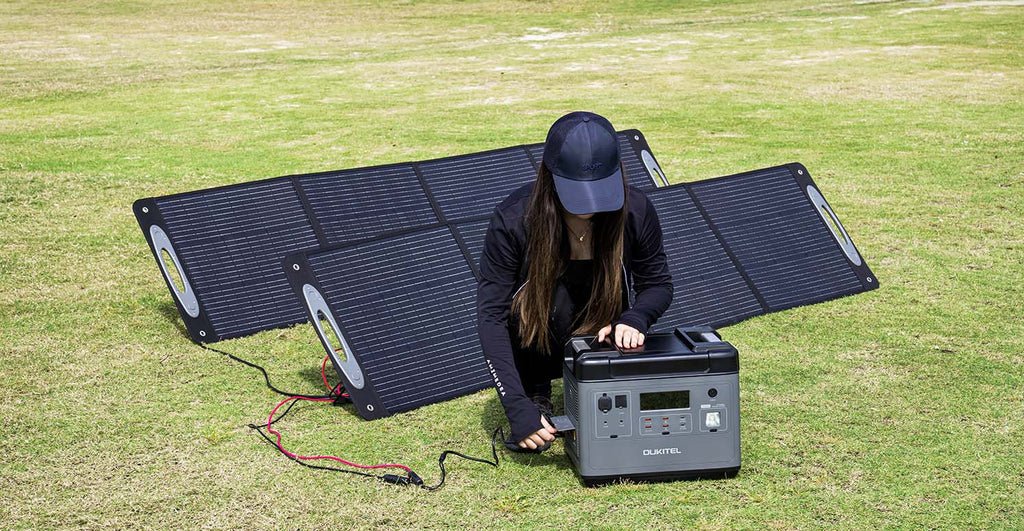
Conclusion
Portable solar panels are not just a technological trend but a practical solution to simplify your life, whether you’re an adventure enthusiast, a remote worker, or simply someone interested in sustainable alternatives. Combining energy independence, long-term savings, and a positive environmental impact, these devices have become more than just gadgets—they’re an investment in the future.
The key is understanding how to choose the right panel, maintaining it properly, and optimizing its performance to meet your needs. Whether you’re planning to use it to power a phone in the middle of nature or for emergency situations, a portable solar panel can become a reliable ally.
So, if you want to enjoy clean energy anytime and anywhere, consider all the tips and information presented in this guide. And remember, if you’re looking for portable solar panels at great prices, check out the offers available at DualStore. Energy freedom is just a step away!
